There’s a lot to learn and learning begins on the very first day of our lives! It might even begin before birth, but since nobody has ever been born with the innate ability to read and write, we know that these well-known signature skills of a civilization must be acquired and nurtured.
There are many other essential skills that a fledgling human learns: eating with a spoon, getting on with others, getting dressed… and most do so at different rates. However, when a child reaches classroom age, understanding the symbolic representation and reproduction of language becomes of primary importance – with good reason.
- Reading is good for your brain, your health, and your future. Countless studies link early (and later!) advancement in reading to success in adult life. What’s more, children who adopt reading as pleasurable activity are even more likely to grow into healthier, more productive, even happier adults.
- Almost everything we know about everything is written down somewhere: restaurant menus, The Dead Sea Scrolls, some traffic signs, this blog…
- Learning about our own culture, other current cultures, and previous cultures informs and lends intelligence to our perception and decision-making process. Directly affecting in a big way everything around about us. Reading has resulted in enormous changes in how humans have evolved and will continue to do so.
- Gaining knowledge of and progress in any area, academically or otherwise, requires a firm grasp of literacy skills.
Popplet is used extensively by educators teaching reading skills, and we frequently republish their ideas. Our previous blog post can be found here. It is used mainly by early years teachers, but Popplet’s intuitive, user-friendly interface and the creative imaginations of teachers and learners alike make it a popular addition to reading activities at all levels, from kindergarten to college. Here are some current examples of how Popplet is being used in the reading classroom.
Retelling Stories
Retelling is a strategy that is used to determine how well a student has comprehended a specific story. Retelling improves comprehension and assesses how much the reader has understood. Teachers gain insight as to how students are processing the information they read in a text. There are several areas that retellings include:
- Presence of character(s)
- Character studies
- Problem presented in the story
- Solution to that problem (or the end)
- Events presented in sequential order
- Ability to include only those events important to the story and exclude unimportant events
Below, Little Red Riding Hood is retold in a popplet from the classroom of Early Years Educator, Sian Bakewell. The students added later drawings and an audio file using Keynote:
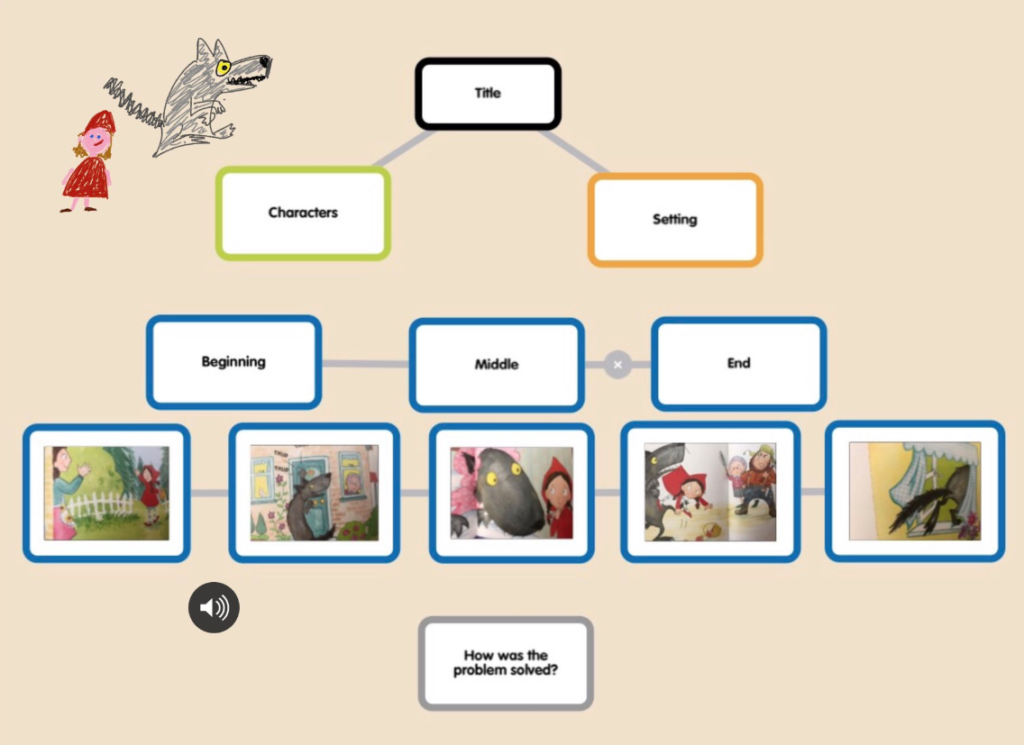
Making Questions From Chapter Titles
Most books and texts are linear in that they follow recognizable styles of organization. Traditionally a book will have a title on its front cover, where there might also be a picture and the name of the author. Inside there can be any number of things, but the main body of the book, “the text”, is often broken down into named chapters, a list of which can usually be found at the beginning of the book. Named chapters may give readers some clue as to their content and the curious reader will almost certainly make assumptions, but only by reading the text will they uncover the next part of the story.
Elementary Academic Technology coach, Jeanette Campbell, recently shared this activity where she had students make questions from the titles of a book’s chapters to help learners understand main ideas, sequence, and details.
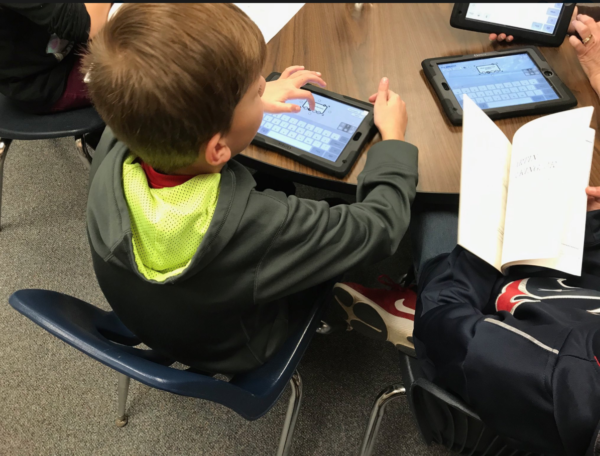
Students could complete this activity pro- or post-reading, or both. It could even be done chapter by chapter, class by class. The focus could be shifted character or plot. Higher level students could undertake a study of narrative devices. A highly adaptable activity, which used effectively could greatly deepen a learner’s understanding and comprehension.
Reading As a Tool in Language Learning.
Not so long ago, text and grammar were the only tools in a language teacher’s satchel. The classic languages such as ancient Greek and Latin could only be learned through studying the writings of ancient times as all the native speakers were – and still are – long gone. In fact, these languages are still studied this way.
At one time, modern languages too had to be taught this way because until the majority of people had the resources to travel, it was difficult for language learners to have any meaningful contact with the cultures whose languages they were studying. Fortunately, things have progressed and the modern language teacher has a great many tools.
Despite this, the use of text, books in particular to facilitate language learning is still common practice as it is still a valuable method which spans many areas such as vocabulary, pronunciation, and grammar. English Language Support Teacher, Sara Valladolid, outlines some of the activities she uses with her students:
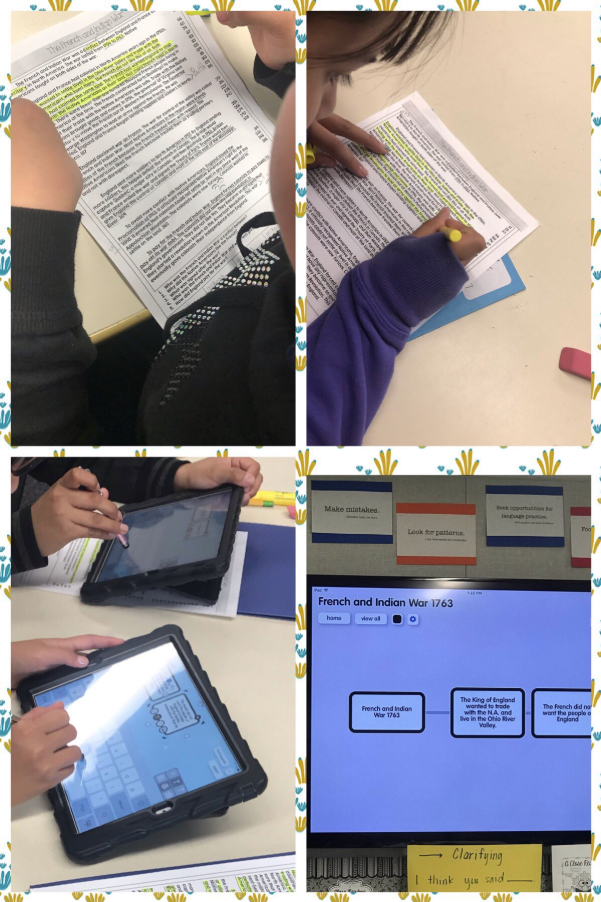
You’ll find more ideas about how to use Popplet in language learning here.
Learning About Text Structures
A common strategy used by educators when teaching reading skills is having learners identify the different structures present in fiction and nonfiction texts. As well as increasing a student’s comprehension and enjoyment of reading, this type of activity can be done as a whole class, in small groups, and individually. Fourth-grade teacher, Mr. Winslow, was very happy with his students’ efforts and the popplets that they produced. Here’s one based on the structure of a text about the Titanic:
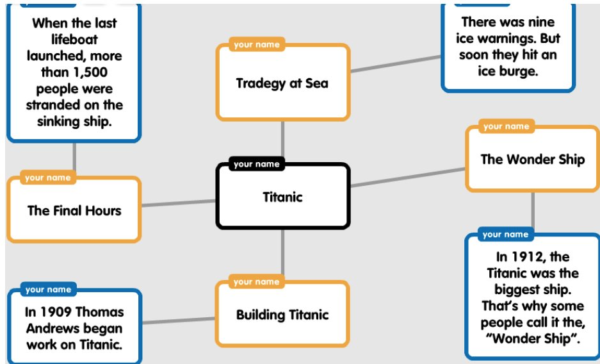
Comparing and Contrasting Books
How do we know if a book is good or not? Well, we may ask ourselves if we enjoyed reading it. We could go further and ask why we enjoyed it. These are the beginnings of critical responses to reading. Comparing and contrasting texts might yield similar from individuals, but then again it may not because not everybody sees things in quite the same way. If fictional reading is for anything, it is surely to walk for a while in the shoes (or glass slippers!) of another. A valuable skill, and one which Gabalfa Primary learned recently when they compared the universal tale Cinderella with its modern counterpart Cinderella: Alex and the Glass Slipper.
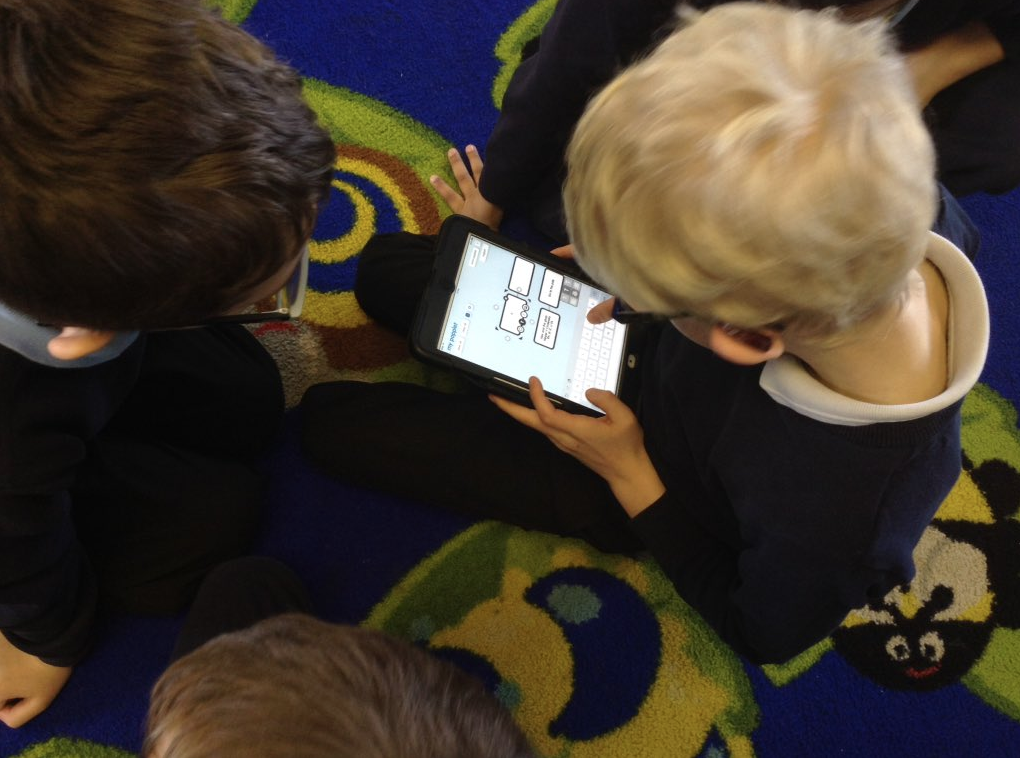
Extracting Important Details From Text and Sharing Information
There now exist more ways than ever to learn the facts about something we are studying; the internet is awash with videos for example. In saying that, there are now more ways than ever to access non-factual information. However, there is still more text than images on the internet and students must still learn to sift information in text form to gain insights into their subject of study. They will often need to demonstrate what they have learned and Popplet is an excellent tool for this. It allows students to add text, images, drawings, and videos. Popplet also lets students and teachers collaborate on their work. Check out the students of Reading Specialist, Donna Stevenson, getting to know all about Roadrunners, creating popplets with their findings, and sharing their work:
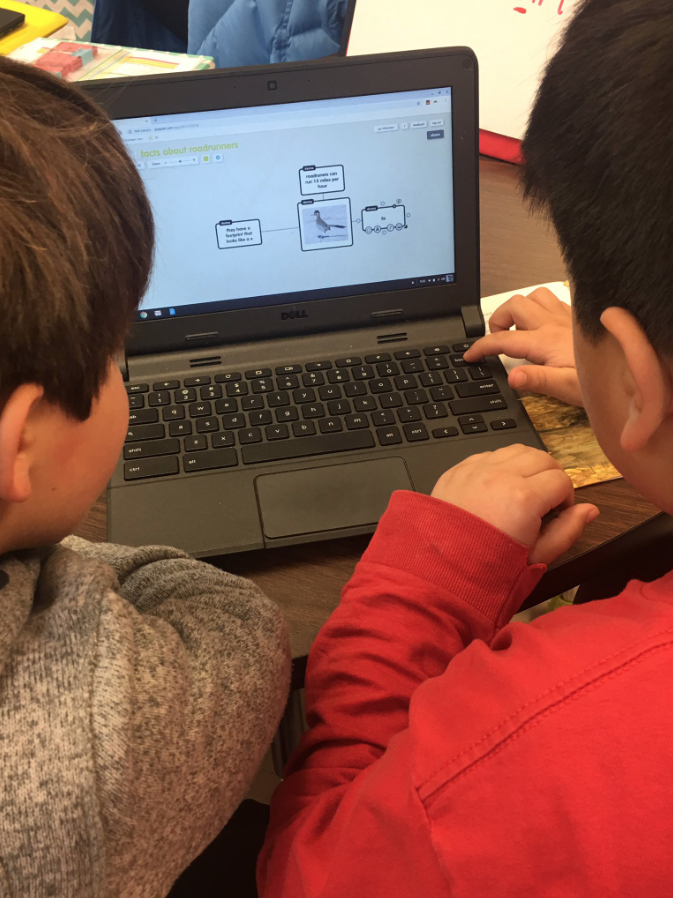
As we said, texts normally have a beginning, a middle, and an end, and this is the end of this post. We hope that you found it informative and if you choose to try out some of the ideas we’d really like to see the results. Share with us, the Popplet community, on Twitter, and our Facebook page.